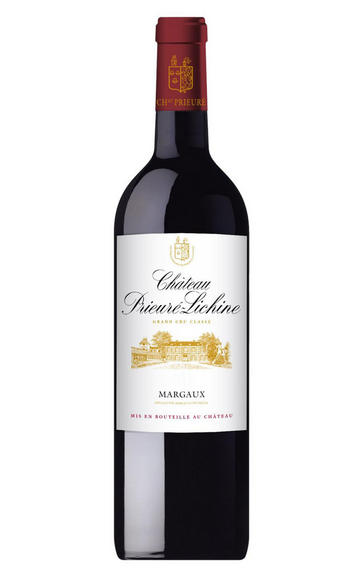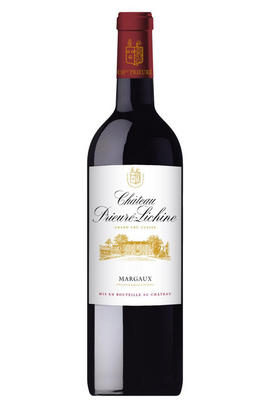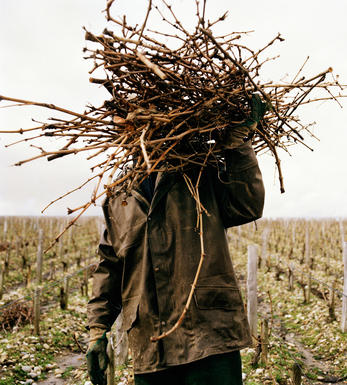
2010 Château Prieuré-Lichine, Margaux, Bordeaux

Critics reviews
Robert M. Parker, Jr. - 28/02/2013
(Jancis Robinson MW - jancis robinson.com - Apr 2011)
A beautiful example of wine from this estate, which is using well-known consultant Stephane Derenoncourt, finished 2010 at 14.5% natural alcohol, and seems to be one of the sexier, more developed and evolved styles of the vintage.
(92 Robert Parker - Wine Advocate - Feb 2013)
The strongest Prieure Lichine produced in many years, along with consultant Stephane Derenoncourt, the proprietors have fashioned a wine with true opulence as well as wonderful projected aromatics of blue, red and black fruits, licorice, flowers and subtle oak.
Silky tannins, a sexy, generous, opulent attack, mid-palate and finish, no hard edges and well-integrated acidity, tannin and alcohol (14.5%) are all found in this impressive Margaux. Give it 2-5 years of cellaring and drink it over the following 25. It is potentially one of the longest lived wines made at Prieure Lichine since some of their classic efforts from the sixties.
(92-94 Robert Parker - Wine Advocate # 194 May 2011)
About this WINE

Chateau Prieure-Lichine
Château Prieuré-Lichine, a large 4ème Cru Classé Margaux estate, is one of the most fragmented in the Médoc with as many as 40 separate parcels of vines scattered throughout the Margaux appellation. Prieuré-Lichine was purchased in 1951 by the great Bordeaux visionary Alexis Lichine - he improved the quality of the wines through investing heavily in new vineyards and by modernising the vinification techniques. He died in 1989 and the estate is now run by his son Sacha, with guru oenologist Michel Rolland acting as consultant.
Prieuré-Lichine has 68 hectares of vineyards and the wine is typically a blend of 55% Cabernet Sauvignon, 40% Merlot, 3% Petit Verdot and 2% Cabernet Franc. It is matured in oak barriques (40% new) for 18 months.
Prieuré-Lichine's relatively high Merlot content gives the wine suppleness and elegance with the wines from the best years possessing a beautifully perfumed nose with a firm structure and good depth of fruit on the palate.

Margaux
If Pauillac can be seen as the bastion of ‘traditional’ Red Bordeaux, then Margaux represents its other facet in producing wines that are among Bordeaux’s most sensual and alluring. It is the largest commune in the Médoc, encompassing the communes of Cantenac, Soussans, Arsac and Labaude, in addition to Margaux itself. Located in the centre of the Haut-Médoc, Margaux is the closest of the important communes to the city of Bordeaux.
The soils in Margaux are the lightest and most gravelly of the Médoc, with some also containing a high percentage of sand. Vineyards located in Cantenac and Margaux make up the core of the appelation with the best vineyard sites being located on well-drained slopes, whose lighter soils give Margaux its deft touch and silky perfumes. Further away from the water, there is a greater clay content and the wines are less dramatically perfumed.
Margaux is the most diffuse of all the Médoc appelations with a reputation for scaling the heights with irreproachable wines such as Ch. Margaux and Ch. Palmer, but also plumbing the depths, with too many other châteaux not fulfilling their potential. There has been an upward shift in recent years, but the appellation cannot yet boast the reliability of St Julien. However, the finest Margaux are exquisitely perfumed and models of refinement and subtlety which have few parallels in Bordeaux.
Recommended Châteaux: Ch. Margaux, Ch. Palmer, Ch. Brane-Cantenac, Ch. Rauzan-Ségla , Ch. Dufort-Vivens, Ch. Ferrière, Ch. du Tertre, Ch. Giscours, Ch. d'Angludet.

Cabernet Sauvignon Blend
Cabernet Sauvignon lends itself particularly well in blends with Merlot. This is actually the archetypal Bordeaux blend, though in different proportions in the sub-regions and sometimes topped up with Cabernet Franc, Malbec, and Petit Verdot.
In the Médoc and Graves the percentage of Cabernet Sauvignon in the blend can range from 95% (Mouton-Rothschild) to as low as 40%. It is particularly suited to the dry, warm, free- draining, gravel-rich soils and is responsible for the redolent cassis characteristics as well as the depth of colour, tannic structure and pronounced acidity of Médoc wines. However 100% Cabernet Sauvignon wines can be slightly hollow-tasting in the middle palate and Merlot with its generous, fleshy fruit flavours acts as a perfect foil by filling in this cavity.
In St-Emilion and Pomerol, the blends are Merlot dominated as Cabernet Sauvignon can struggle to ripen there - when it is included, it adds structure and body to the wine. Sassicaia is the most famous Bordeaux blend in Italy and has spawned many imitations, whereby the blend is now firmly established in the New World and particularly in California and Australia.


Buying options
Add to wishlist
Description
Dense purple, with loads of blueberry and blackberry fruit as well as hints of smoke and subtle charred wood, this wine is expansive, round, generous, lush and multi-dimensional. This beauty can be drunk now or cellared for 15-20 years.
Robert M. Parker, Jr. - 28/02/2013
wine at a glance
Delivery and quality guarantee